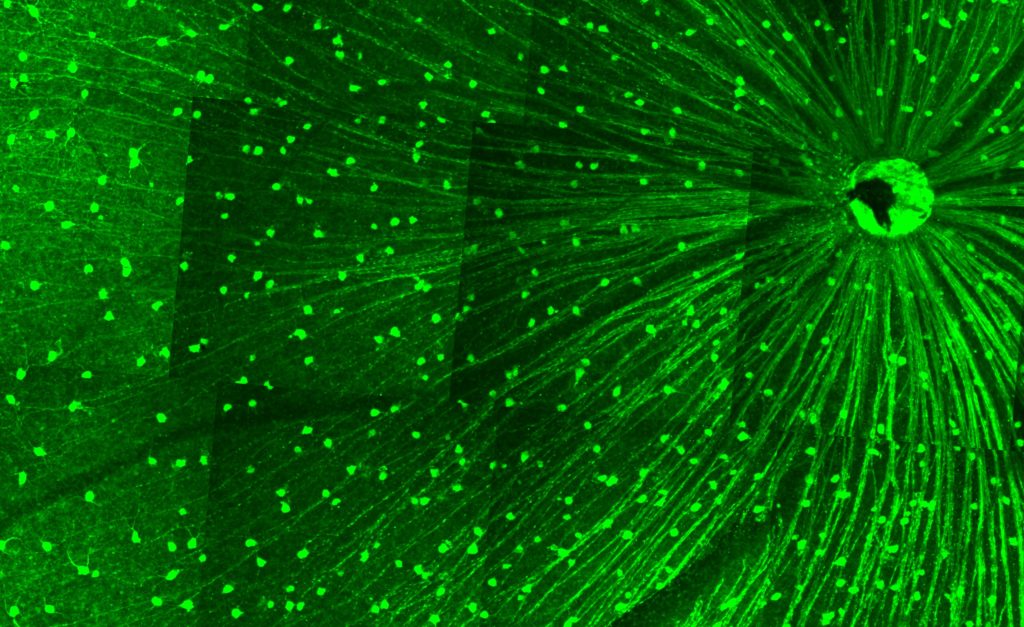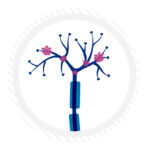Optic nerve regeneration: One approach doesn’t fit all

Getting a damaged optic nerve to regenerate is vital to restoring vision in people blinded through nerve trauma or disease. A variety of growth-promoting factors have been shown to help the optic nerve’s retinal ganglion cells regenerate their axons, but we are still far from restoring vision. A new study on optic nerve regeneration, published yesterday in Neuron, underscores the complexity of the problem.
A research team led by Fengfeng Bei, PhD, of Brigham and Women’s Hospital, Zhigang He, PhD, and Michael Norsworthy, PhD, of Boston Children’s Hospital, and Giovanni Coppola, MD, of UCLA conducted a screen for transcription factors that regulate the early differentiation of RGCs, when axon growth is initiated. While one factor, SOX11, appeared to be critical in helping certain kinds of RGCs regenerate their axons, it simultaneously killed another type — alpha-RGCS (above)— when tested in a mouse model.
At least 30 types of retinal ganglion cell message the brain via the optic nerve. “The goal will be to regenerate as many subtypes of neurons as possible,” says Bei. “Our results here suggest that different subtypes of neurons may respond differently to the same factors.”
Related Posts :
-

The thalamus: A potential therapeutic target for neurodevelopmental disorders
Years ago, as a neurology resident, Chinfei Chen, MD, PhD, cared for a 20-year-old woman who had experienced a very ...
-

Could peripheral neuropathy be stopped before it starts?
An increase in high-fat, high-fructose foods in people’s diets has contributed to a dramatic increase in type 2 diabetes. This, ...
-

Mutations during prenatal development may contribute to schizophrenia
Schizophrenia is known to have a genetic component, and variants in 10 genes have been identified as markedly increasing schizophrenia risk. ...
-

Delving into the causes of attention deficits: Childhood adversity, lost sleep, and dopamine
New research on the effects of adversity in childhood ties together stress, sleep loss, and attention deficits later in life. ...





